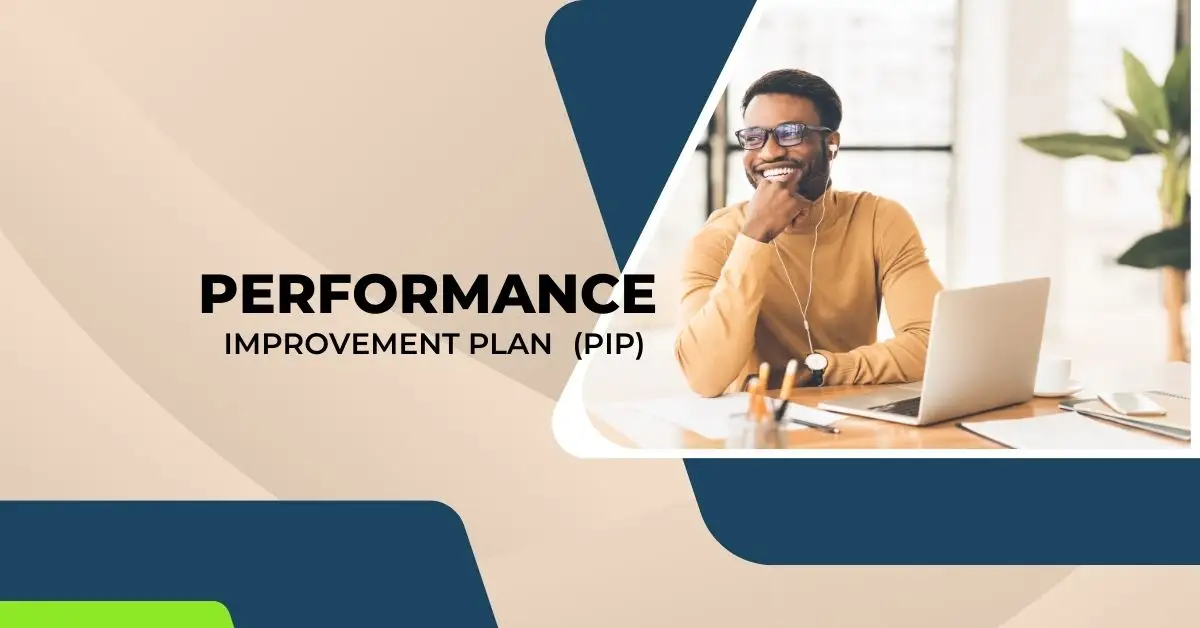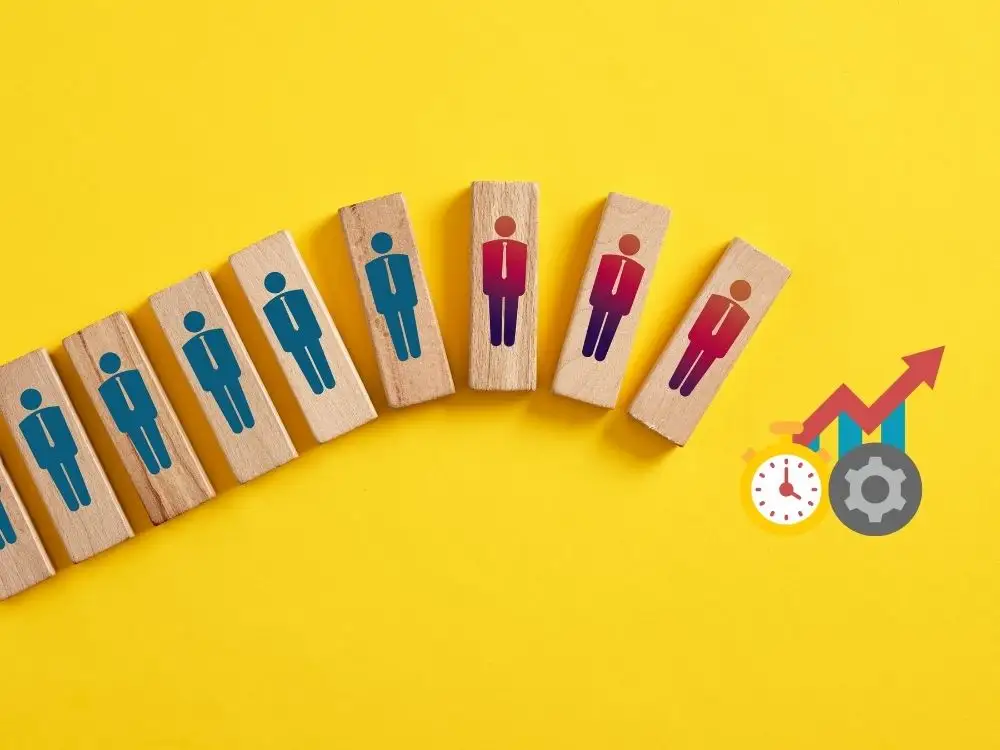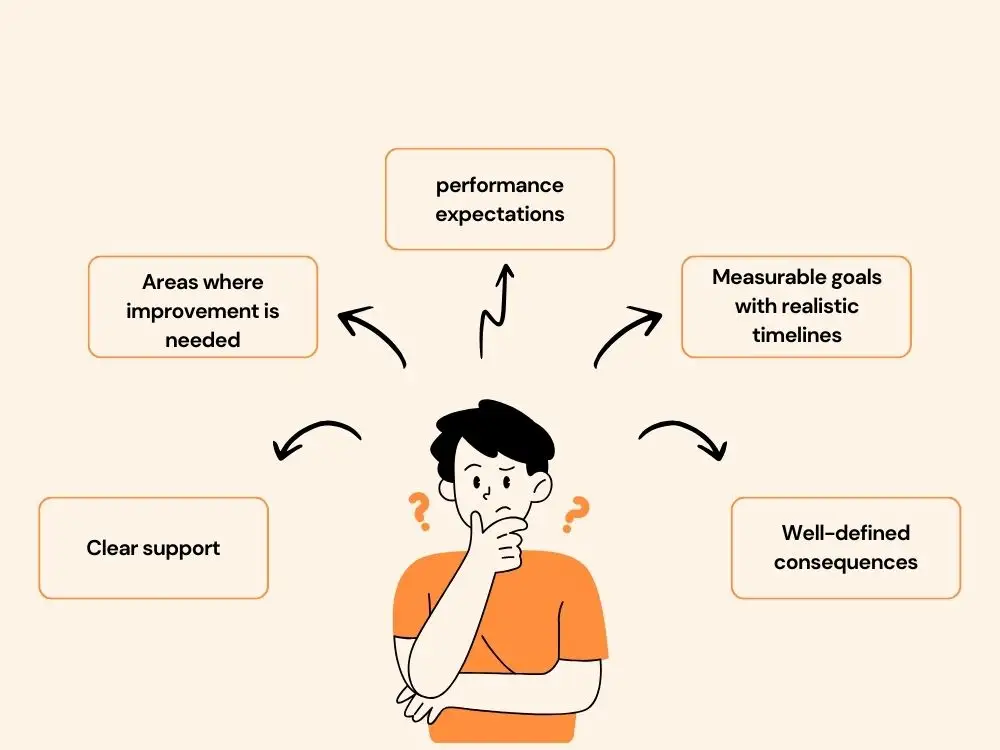
Performance Improvement Plan (PIP): A Complete Guide with Examples & Template
How do managers help struggling employees get back on track? Performance Improvement Plans (PIPs) are the go-to tool when an employee isn't meeting job expectations. When team members fall behind, companies need a clear way to help workers improve.
PIPs give employees a straightforward path to understand what's not working and to learn the right skills. Plus, it helps show real progress. If you're an HR manager dealing with team challenges or an employee wanting to understand this process, this guide will show you everything about performance improvement.
Key Takeaways
- Know what a performance improvement plan (PIP) is and when you should use it.
- Key components of an effective PIP and the step-by-step approach to create it.
- Free PIP downloadable template, an example, and best practices.
What is a Performance Improvement Plan (PIP)?
A performance improvement plan (PIP) is an effective tool for nurturing employee growth. It becomes mandatory when an individual faces trouble meeting performance expectations. The plan allows employees to determine the gaps in their performance review and offers a way to overcome them.

A PIP isn't a threat to anyone's employment that is meant to fire someone. It's more like a helpful approach that shows the organization's approach to making employees succeed. It gives an employee a clear road map that labels which areas need improvement, and it shows how to get to full potential.
Most organizations use PIPs to invest in their team members and allow them to enhance their skills and contribute more effectively.
When Should You Use a PIP?
Performance issues are common in any workplace. However, not every situation requires a formal Performance Improvement Plan. Managers must carefully assess when a structured intervention becomes necessary. A PIP is typically appropriate when:
- Employees consistently perform at levels below standards.
- Previous informal coaching and feedback haven't produced meaningful change.
- An employee's work quality or productivity significantly impacts team objectives.
- There are clear, documented performance gaps that require systematic improvement.
The main goal of a PIP is to provide an organized course for professional development. It signifies the organization's serious commitment to developing an employee while maintaining clearly set expectations for performance.
By having PIPs in place, the companies indicate a balanced stance between offering real support and expecting accountable professional performance from them.
Key Components of an Effective PIP
A PIP must have certain elements to be effective. It's about creating a fair roadmap that helps employees understand exactly what needs to change and how they can succeed. It should include:

- Precise performance expectations that leave no room for confusion.
- Specific areas where improvement is needed, backed by concrete examples.
- Measurable goals with realistic timelines that allow meaningful progress.
- Clear support mechanisms and resources the company will provide.
- Well-defined consequences if performance targets are not met.
The best-performing PIPs feel more like a collaborative effort than some sort of punishment. They discuss a way forward with openness while allowing employees an honest chance to prove they have potential. Plus, it can turn a performance challenge into a professional growth opportunity.
How to Create a Performance Improvement Plan (Step-by-Step)
Developing a PIP requires careful thought and the right approach. The following steps outline the things clearly according to company standards.
- Step 1- Identify Performance Gaps: Look closely at where things are falling short. Gather real proof of performance issues, focusing on specific moments when work didn't hit the mark. Be fair and stick to the facts.
- Step 2- Define Clear Goals: Create objectives that make sense to the employee. Use the SMART approach, where goals should be something they can actually understand and achieve.
- Step 3- Set a Realistic Timeline: Give the employee a fair time for improving. Most plans run between 30 to 90 days, depending on the role and challenges they're facing.
- Step 4- Offer Real Support: Provide adequate support in achieving things. This might mean extra training, mentoring, or giving them the tools they need to make this improvement possible. Many companies also use onboarding software to streamline employee training and ensure they receive the right resources efficiently.
- Step 5- Check In Regularly: Meet consistently to see how things are going. This is about having honest, helpful conversations regarding the progress.
- Step 6- Decide What's Next: At the end of the PIP plan, assess the employee's performance. Possible outcomes include such as successful improvement and return to standard performance, need for plan extension, consideration of alternative roles, and potential employment termination.
Performance Improvement Plan Template (Free Download)
Performance Improvement Plan Example
Employee Details:
- Name: Sarah Rodriguez
- Job Title: Senior Marketing Specialist
- Department: Marketing
Performance Issues:
Over the past two quarters, there have been consistent concerns regarding project deliverables and team collaboration. Specifically:
- Campaign reports have been submitted late, which caused delays in strategic planning.
- Collaborative team projects have experienced communication breakdowns.
- The quality of creative content has been below the expected standard for a senior-level position.
Improvement Objectives:
- Project Timeliness
- Submit all campaign reports by the last working day of each month.
- Implement a personal tracking system to monitor project deadlines.
- Provide status updates to the team lead every two weeks.
- Team Collaboration
- Attend and actively participate in all team meetings.
- Respond to team communication channels within 24 hours.
- Contribute constructive feedback during project planning sessions.
- Content Quality
- Develop two sample marketing campaigns that demonstrate creativity and strategic thinking.
- Undergo additional training in current digital marketing trends.
- Seek peer review for all major project deliverables before final submission.
Timeline:
- Start Date: 2025-03-26
- End Date: 2025-07-26
Support and Resources:
- Assigned mentor from senior marketing leadership.
- Access to advanced digital marketing webinars.
- Bi-weekly coaching sessions with the department head.
- Additional budget for professional development courses.
Manager Signature: ________________
Employee Signature: ________________
Date: ________________
Best Practices for Implementing a PIP Successfully
The implementation should be a delicate process that requires careful navigation of professional expectations and employee support. However, the approach must be strategic and crystal clear to truly drive positive change and maintain team morale.
Dos and Don'ts of PIP Implementation
| Area | Dos | Don'ts |
|---|---|---|
| Communication | Schedule a private, face-to-face meeting | Surprise the employee with a PIP |
| Tone | Use supportive, constructive language | Use punitive or accusatory language |
| Documentation | Provide clear, specific, measurable goals | Use vague or subjective performance criteria |
| Feedback | Offer regular, specific feedback | Wait until the end of the PIP to provide critique |
| Support | Provide resources and mentorship | Leave the employee feeling unsupported |
| Legal Considerations | Maintain consistent standards across employees | Show any signs of discrimination or bias |
| Progress Tracking | Set up regular check-in meetings | Ignore progress or fail to communicate |
| Emotional Intelligence | Show empathy and respect | Treat the PIP as a purely transactional process |
Wrapping Up
A performance improvement plan (PIP) is a great assistant that ensures growth opportunities. By approaching PIPs with clear communication and genuine support, firms can turn their challenges into professional development opportunities that benefit both employees and the company.
FAQs
Q1: What is the success rate of PIP?
About 40% of employees turn things around with a solid PIP. It's more than just paperwork that is about genuine support and believing in someone's potential to grow.
Q2: Can an employee dispute a Performance Improvement Plan?
PIPs aren't a one-way street. Your voice matters, and good managers want honest, two-way conversations that help you succeed.
Explore Related Posts
https://smarttoolsai.com/post/quality-of-work-performance-review-phrases-and-examples
https://smarttoolsai.com/post/examples-of-effective-team-dynamics
.webp)